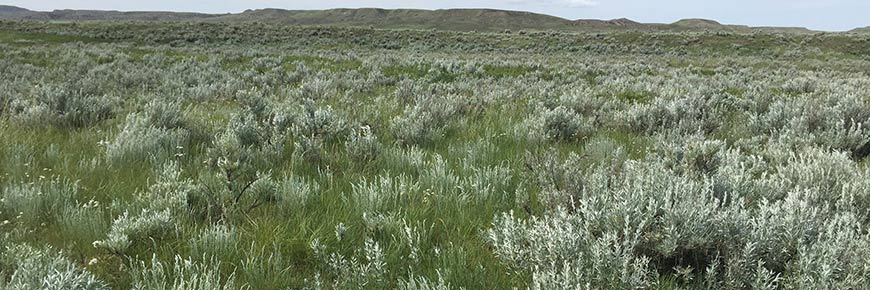
Vegetation Restoration
Grasslands National Park
Grasslands National Park has an extensive vegetation restoration program that began in 1997 and has restored, to varying degrees of success, 1133 hectares of previously cultivated land to native prairie species. Most of this work has been completed in the West Block on land that was ploughed and planted to cereal crops as of 1983 (prior to Park establishment). Recent mapping work in the park has shown further opportunities for restoration, including fields in recently acquired lands, tame grass fields planted to either smooth brome or crested wheatgrass, and areas that have been invaded by agronomic species. There are close to 3680 hectares of non-native vegetation in the park with potential for restoration, 85% of which is in the West Block.
Because of the critical status of the greater sage-grouse in Canada, the restoration of optimal nesting and brood rearing habitat has been identified as a recovery action in Grasslands National Park. To assist in sage-grouse recovery, staff have proposed to restore hayfields along the Frenchman River in the West Block of the Park to native plant species and Silver Sagebrush. It is likely that some of these hayfields were previously sagebrush flats, which would have been important nesting and brood rearing habitat for sage-grouse.
The hayfields are dominated by crested wheatgrass and smooth brome, both very aggressive non-native species known to displace native prairie. To properly prepare the site for seeding a mix of native seeds, an attempt needs to be made to eradicate these species. Properly timed control measures may include cutting, burning, herbicide application, and ploughing. These activities will reduce the growth above and below ground and hopefully reduce the amount of non-native seed stored in the soil. Once the site has been properly cleared of vegetation, a carefully prepared native seed mix will be planted. Follow up work may include the addition of shrub or forb plugs, island seeding to create diverse patches of plants, and of course monitoring to see how our plants are establishing at the site.
For more than 20 years, Grasslands National Park has been restoring native prairie, and this experience has shown that successful restoration requires high quality native seed, ongoing management and monitoring, and patience. Good planning and site preparations will set the foundation for success, after which, the wait for the necessary climatic conditions to properly influence native plant establishment begins. Large scale native prairie restoration typically cannot be achieved in a few short years, but looking back over the last couple decades, restoration has been worthwhile in providing habitat to those species reliant on native prairie.
- Date modified :